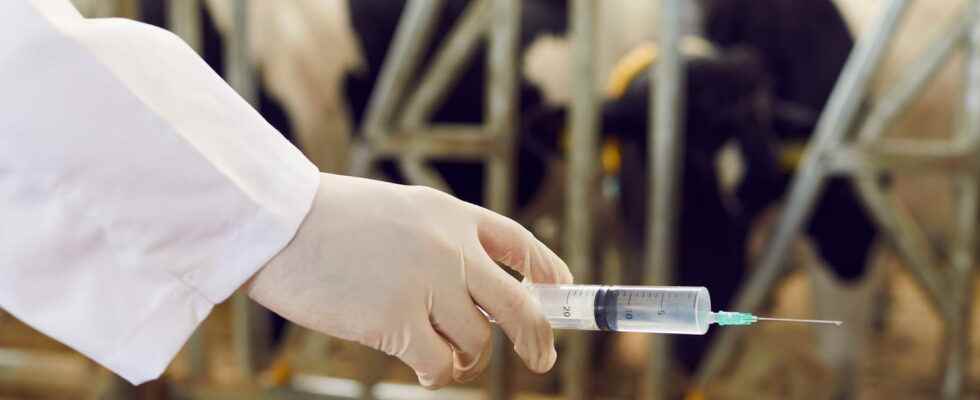Bovine spongiform encephalopathy (BSE) better known as “mad cow disease” is a degenerative disease affecting the central nervous system. Symptoms are similar to those of Creutzfeldt-Jakob disease. Transmissible to humans, it is fatal. The point with Dr. Emmanuel Cognat, neurologist.
Definition: what is mad cow disease?
L’bovine spongiform encephalopathy (BSE), better known as “mad cow disease“, is a degenerative disease of the spinal cord and brain of bovids. It’s a animal disease that can transmit to man (mad cow crisis in the 90s) and result in a “Variant of Creutzfeldt Jakob’s disease” specifies thehandles.. It results in particular in tremors. BSE is not caused by a classic infectious agent, such as a virus or bacteria, for example, but by a “prions” (acronym of Proteinaceous Infectious Only Particle). The latter is a abnormal conformation protein. “It is an exceptional disease: to date only 232 cases have been reported worldwide, including nearly 80% in the UK“, comments Dr. Emmanuel Cognat.
What is its origin ?
According to’handlesmad cow disease emerged in UK in 1986. The number of cattle affected continued to increase in subsequent years, reaching a maximum of 37,280 cattle in 1992. The disease then spread to the rest of Europe and to some other countries in the world (United States, Japan, Canada). But it is in 1996 that the mad cow crisis, health and then economic, has declared itself, when scientists discovered the possibility of transmission to humans bovine spongiform encephalopathy. During this period, several countries and particularly Great Britain experienced an epidemic of BSE. She causes thecollapse in beef consumption. Various measures such as the systematic slaughter of herds and the prohibition of animal meal help to stem the epidemic.
BSE is transmissible to humans, through consumption of infected meat. “A few exceptional cases of transmission following a blood transfusion from an infected donor have also been reported.“, specifies the neurologist. The disease transmitted to humans presents itself as a variant of Creutzfeldt-Jakob disease.
What is the incubation time for mad cow disease?
The incubation time is highly variable, but is most often understood between 5 and 10 years after contamination.
What are the symptoms ?
The symptoms are similar to those of Creutzfeldt-Jakob disease. The manifestations of the disease are tequilibrium rublesfrom abnormal movements and disorders of intellectual functions which worsen progressively to evolve in less than a year towards death. “Patients have no fever and we do not find any abnormalities in their blood that could suggest the existence of an active infection” explained Professor Rabaud in a publication dedicated to the disease in 2001.
“The diagnosis of Creutzfeldt-Jakob disease can only be formally made at autopsy by analysis of brain tissue. Three examinations help guide the diagnosis:Brain MRIa lumbar puncture to study the cerebrospinal fluid and a electroencephalogram to measure the electrical activity of the brain. When the lumbar puncture shows a elevation of protein 14.3.3, witness to the death of cerebral neurons in great abundance, it is a very evocative sign of Creutzfeldt-Jakob disease“, Indicates Dr. Emmanuel Cognat.
What is the treatement ?
Bovine spongiform encephalopathy is incurable and deadly. Studies are still in progress on the let’s pray to better understand the mode of contamination.
Is there a vaccine?
Unfortunately, there is no no vaccine against this variant of Creutzfeldt-Jakob disease.
Thanks to Dr. Emmanuel Cognat, neurologist at the cognitive neurology center at the Lariboisière – Fernand Widal hospital group and lecturer.
